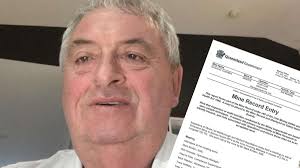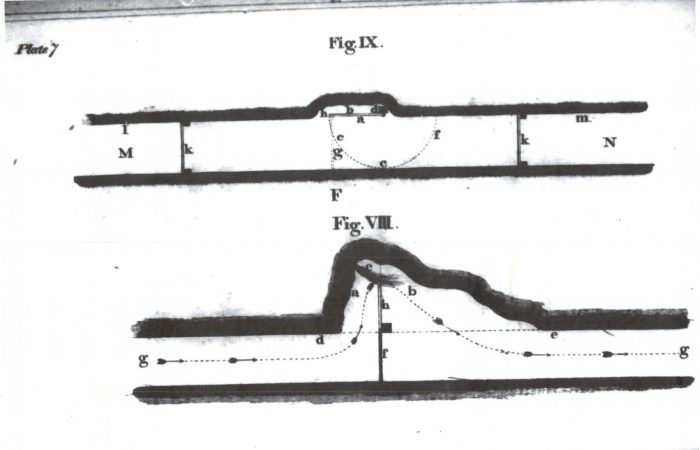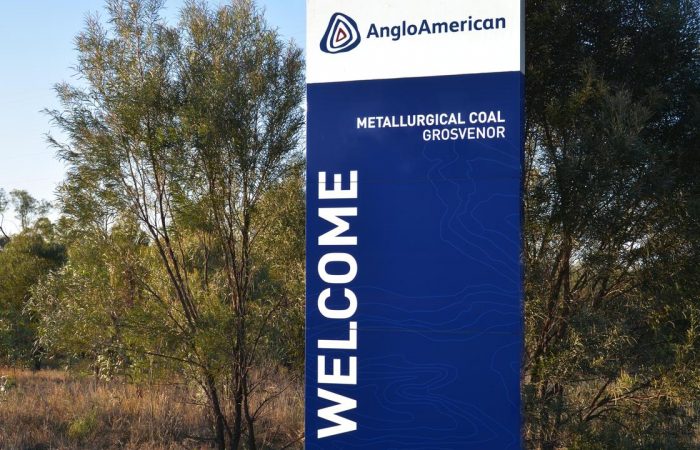
It was also acknowledged that continued HPl’s with Methane greater than 2.5% was not satisfactory and the mine must ensure that such HPl’s are minimised, and preferably eliminated going forward. OR WHAT?
This is the concluding paragraph of the Inspectors MRE from the 19th of May 2018.
It was also acknowledged that continued HPl’s with Methane greater than 2.5% was not satisfactory and the mine must ensure that such HPl’s are minimised, and preferably eliminated going forward.
OR WHAT?
ISSUE DIRECTIVES REQUIRING THE MANAGEMENT TO TAKE STATED ACTION? NO
ISSUE DIRECTIVES TO STOP THE MINING UNTIL THE METHANE IS DRAINED? NO
PROSECUTE THEM? NO
What happened to the February 2016 documented anticipation of both the Grosvenor Management and the Inspectorate that there will be a future need for
“effective pre-drainage of methane from Goonyella Middle seam and surrounding strata”
The Mine is relatively uncomplicated at present but it is anticipated that the future will present more challenging conditions especially in regard to working temperatures and effective pre-drainage of methane from Goonyella Middle seam and surrounding strata.
Since the last meeting two months ago on the 16th of March changes to goaf drainage hole design and method of drilling, changes to length of casing in goaf drainage holes and reducing Longwall face ventilation quantity had occurred.
- It was explained that the last two HPl’s appeared to be a result of floor blowers in the goaf
- The Goaf Drainage System is at near capacity and had reached a total of 8,200 1/s of total gas (approx. 5,500 l/s Methane). 5.5 cubic metres/second (m3/s) of CH4 and approximately 67% Purity
- 0.8m3/s (800 l/s) of Methane is being extracted from LW101 goaf.
- The Mine is injecting Nitrogen into the 101 goaf in order to try to minimise methane migrating from the 101 goaf to 102 goaf as had been successfully achieved at Grasstree Mine.
- Three (3) independent statistical analysis companies to do in depth data analysis to try to identify trends and similarities between gas drainage and methane exceedances.”
- The residual gas content of the coal in 102 LW, where the face position is currently is approximately 2 m/t. “This is not particularly high and mines with higher gas content are having very few or no methane issues in the TG resulting in HPl’s with methane greater than 2.5%”
- The lessons learned from this work will be utilised in managing methane in LW103 which has significant challenges with its position under the Isaac River and the difficulty this imposes on goaf drainage hole positioning.
The almost total reliance on post drainage of methane is demonstrated by the figures of methane (5.5 m3/s) being sucked out via goaf boreholes.
The LW 102 ventilation system runs at about 80 m3/s and runs at 1.5% or above as the normal methane level.
That is a total of 1.2 m3/s of Methane via the 102 Ventilation system.
102 Ventilation system deals with 18% of the total methane emissions (6.7 m3/s)
If all the methane was going out through the LW TG Return Roadway in 80m3/s, the methane level would be an average of 8.4%
Put another way, to dilute 6.7 m3/s of methane and run the LW TG Return Roadway at the 1.5% mentioned would require over 440 m3/s of ventilation
The Inspectors state that the Management SHOULD
The Mine should consider options for reducing this including reversing air around the bleeder or controlling the rib emissions by the application of Fibrecrete as has successfully been done at Moranbah North.
The Mine must consider the level of risk in determining whether or not reversing the bleeder road ventilation presents an acceptable level of risk.
The Mine should reconsider its logic in regard to not tripping power to the shearer until 5% methane is reached and only to stop hauling at 2.0% when the shearer is between 130 shield and the TG leaving power to the cutter drums
We discussed the importance of ensuring controls such as this were included in TARPs and not to rely on communications and notes from UMM. Where possible, these controls should be automated to remove the human element.
Inspectors of Mines Les Marlborough and Richard Gouldstone today held a meeting on site at Grosvenor Mine to discuss recent HPl’s at the mine involving Methane in excess of 2.5% in Longwall 102 TG. We were met at the mine by Mr Mark Kirsten, SSE.
Attendees at the Meeting were; — Mark Kirsten, SSE; Rob Knowles, Operations Manager; Wayne Pate, Compliance Superintendent; Mick Webber, Ventilation Officer; Trent Griffiths, Technical Services Manager; Kate Bachman, HSE Manager; Gary Morrissey, Undermanager.
We explained the purpose of the meeting was to discuss recent HPl’s in LW 102 TG in relation to Methane greater than 2.5%, and progress made since the meeting held on site at Grosvenor on 19 March 2018 regarding the same issue.
We explained that the mine had reported 32 HPl’s since LW 102 had commenced production in January 2018. This represented 60% of all HPl’s in Queensland associated with Methane greater than 2.5% in Longwall TG. I asked what progress the Mine had made since he site meeting that was held with Inspectors and mine management on 16 March 2018.
Mr Griffith Mr Kirsten and Mr Knowles explained the work that had been done since the last meeting. This included changes to goaf drainage hole design and method of drilling, changes to length of casing in goaf drainage holes and reducing Longwall face ventilation quantity. The Mine had conducted significant analysis of goaf drainage performance and had significant success with angled goaf drainage holes and a maingate drainage hole.
The goaf drainage had reached a total of 8,200 1/s of total gas (approx. 5,500 l/s Methane) from the 102 goaf with a further 800 1/s being drained from the adjacent 101 goaf. This level is approaching the full capacity of the goaf drainage plant. The Mine is injecting Nitrogen into the 101 goaf in order to try to minimise methane migrating from the 101 goaf to 102 goat as had been successfully achieved at Grasstree Mine.
The Mine had submitted all of the goaf drainage data, including hole depths, diameters, casing, hole performance data, shearer positions, TG gas levels, production rates etc. to 3 independent statistical analysis companies to do in depth data analysis to try to identify trends and similarities between gas drainage and methane exceedances.
It was explained that the last two HPl’s appeared to be a result of floor blowers in the goaf. These coincided with high loading on LW shields and it is believed that this loading may be as a result of the thickening of overlying sandstone in the roof strata. Analysis is being undertaken to verify this, The Longwall has approximately 300m to retreat to clear this zone.
We explained that Central Colliery had significant issues with floor blowers and had success by drilling UIS holes into the seam below. These holes did not produce a lot of gas but acted to relieve the pressure so that at times of cyclic loading the floor blowers were effectively eliminated.
Mr Webber stated that they had completed a risk assessment on putting the bleeder road onto return but that to do so the conveyor would have to be put on intake, which could cause other issues such as heat and dust on the LW face.
The MG AFC methane monitor shows approximately 0.4% Methane. The TG methane level sits at 1.5% or above as the normal methane level. We explained that this intake pollution is a significant cause of the high Methane level in the TG general body.
The Mine must consider the level of risk in determining whether or not reversing the bleeder road ventilation presents an acceptable level of risk.
We had a discussion regarding positioning of goaf drainage holes and diameter of holes. We discussed trialling where to apply maximum suction to determine which goaf drainage holes had an impact on TG gas levels.
It was explained that an instruction had been given to ERZ Controllers to stop the shearer short of the TG if the TG Gas level was 1.9%. However, the TARP had not been changed.
We discussed the importance of ensuring controls such as this were included in TARPs and not to rely on communications and notes from UMM. Where possible, these controls should be automated to remove the human element.
Mr Kirsten undertook to conduct a review of the TARP.
We discussed the logic behind the TARP and why the TG monitors tripped the shearer at 2.5% and not 2%. All other Methane monitors on the LW and Continuous Miners trip power at 2%.
Mr Kirsten undertook to conduct a review this logic and the associated risk assessment.
The residual gas content of the coal in 102 LW, where the face position is currently is approximately 2 m/t. This is not particularly high and mines with higher gas content are having very few or no methane issues in the TG resulting in HPl’s with methane greater than 2.5%
We made the following points in conclusion;-
- Intake pollution round the bleeder is a significant impact on the methane levels. This apparent with 04% showing on the MG methane monitor. The Mine should consider options for reducing this including reversing air around the bleeder or controlling the rib emissions by the application of Fibrecrete as has successfully been done at Moranbah North. This would benefit all subsequent blocks relying on the air from the bleeder.
- The Mine should reconsider its logic in regard to not tripping power to the shearer until 5% methane is reached and only to stop hauling at 2.0% when the shearer is between 130 shield and the TG leaving power to the cutter drums. Why wait until the methane reaches 2.5% (and hence has the resulting HPI) before tripping power to the shearer? The standard for all other Methane monitors is to trip power at 2.0% or less. Is allowing the TG monitor to reach 2.5% before power is tripped achieving an acceptable level of risk? This point was raised in the MRE issued following the meeting held on 19 Mar 2018. Mr Kirsten undertook to provide feedback on this by Friday 18 May 2018.
- The Mine needs to review the General Body Contaminants TARP to ensure that the TARP lines up with instructions given to CMW’s on operating the Longwall in a gassy environment. Automated trips, haulage restrictions and other controls should be utilised wherever possible rather than relying on “behaviours” or interpretations by operators and ERZ Controllers.
- It was acknowledged that the Mine has conducted a significant amount of work to manage the gas in the LW TG and should be congratulated on the improvements in goaf drainage that have resulted from this. The lessons learned from this work will be utilised in managing methane in LW103 which has significant challenges with its position under the Isaac River and the difficulty this imposes on goaf drainage hole positioning.
- It was also acknowledged that continued HPl’s with Methane greater than 2.5% was not satisfactory and the mine must ensure that such HPl’s are minimised, and preferably eliminated going forward.


